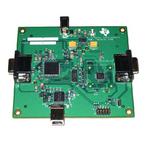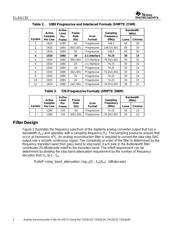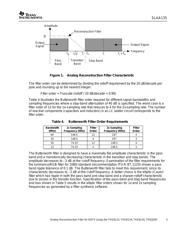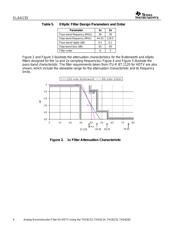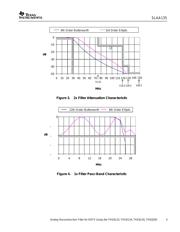下载

Application Report
SLAA135 - September 2001
1
Analog Reconstruction Filter for HDTV Using the
THS8133, THS8134, THS8135, THS8200
Karl Renner Digital Audio Video Department
ABSTRACT
The THS8133, THS8134, THS8135, and the THS8200 devices are part of a family of
chips for graphics and video applications, which contain triple DACs that operate up to
240 MSPS. For television applications, an analog low-pass filter is required to reconstruct
the signal that is input to the monitor. High definition television (HDTV) requires a
sampling frequency of 74.25 MHz and has pass-band, transition-band, and stop-band
attenuation requirements, which affect the complexity of the filter. A higher sampling rate
results in a lower filter complexity.
Introduction
The THS8133, THS8134, THS8135, and THS8200 comprise a family of graphics/video chips
that have triple digital-to-analog converters (DACs) that convert digital graphics signals
GBR/YPbPr to analog. They insert bilevel or trilevel syncs into the green/luma signal. The trilevel
sync is used for horizontal synchronization of high definition (HD) television signals. Table 1 lists
the chips and their capabilities. The THS8200 incorporates a 1:2 upsampling and interpolation
filter, which results in a simplification of the filter design that is used to reconstruct the analog
output signal. The advantages of 2x oversampling are examined for the high definition (HD)
television application.
Table 1. Graphics/Video Chips
Part Bits MSPS 2x Oversampling
THS8133 10 80 No
THS8134 8 80 No
THS8135 10 240 Yes
THS8200 10 205 Yes
Table 2 lists the different HD standards. The 1080i format corresponds to system 4 in Table 2
and the 720p format corresponds to system 1 in Table 3. Both have a sampling rate of
74.25 MHz and a 30-MHz bandwidth requirement for the luma and RGB output filter.

